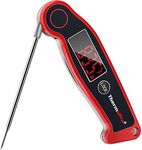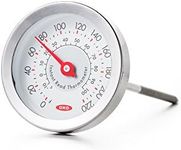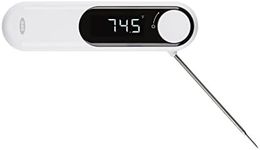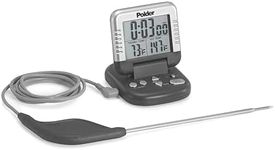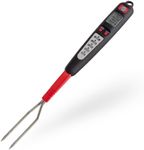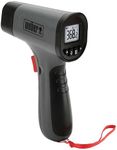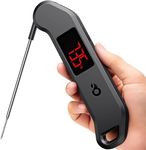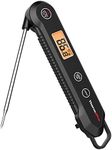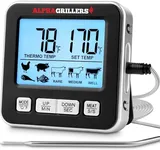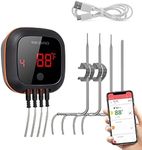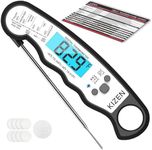Buying Guide for the Best Meat Thermometer Fork
Choosing the right meat thermometer fork can make a significant difference in your cooking experience, ensuring that your meat is cooked to perfection every time. A meat thermometer fork is a handy tool that combines the functionality of a fork and a thermometer, allowing you to check the internal temperature of your meat while handling it. To pick the best one for you, consider the following key specifications and how they align with your cooking needs.Temperature RangeThe temperature range of a meat thermometer fork indicates the minimum and maximum temperatures it can measure. This is important because different types of meat require different internal temperatures to be cooked safely and to your desired doneness. A wider temperature range is generally more versatile. For example, if you frequently cook a variety of meats like poultry, beef, and pork, you’ll want a thermometer that can measure from as low as 32°F (0°C) to as high as 392°F (200°C). If you mostly cook one type of meat, ensure the thermometer covers the necessary range for that specific meat.
AccuracyAccuracy refers to how close the thermometer's reading is to the actual temperature of the meat. This is crucial for ensuring your meat is cooked safely and to the desired level of doneness. Look for a thermometer with an accuracy of ±1-2°F (±0.5-1°C) for the best results. If you are a casual cook, a slight variance might be acceptable, but for precise cooking, especially for steaks or roasts, higher accuracy is essential.
Response TimeResponse time is the amount of time it takes for the thermometer to display an accurate reading after being inserted into the meat. Faster response times are more convenient and help prevent overcooking. Typically, a response time of 2-5 seconds is ideal. If you often cook large cuts of meat or need to check temperatures quickly, opt for a thermometer with a faster response time.
DisplayThe display on a meat thermometer fork shows the temperature reading. A clear, easy-to-read display is important for quick and accurate temperature checks. Look for features like backlighting for use in low-light conditions, large digits for easy reading, and a digital display for precise readings. If you often cook outdoors or in dimly lit areas, these features can be particularly useful.
DurabilityDurability refers to how well the thermometer fork can withstand regular use and exposure to heat and moisture. A durable thermometer fork will last longer and provide more reliable performance. Look for materials like stainless steel for the fork prongs and a sturdy, heat-resistant handle. If you frequently cook on a grill or in high-heat environments, durability is especially important.
Ease of CleaningEase of cleaning is important for maintaining hygiene and prolonging the life of your thermometer fork. Some models are dishwasher safe, while others require hand washing. Consider how easy it is to clean the fork prongs and the handle. If you cook often and want to minimize cleanup time, look for a model that is easy to clean and maintain.
Additional FeaturesAdditional features can enhance the functionality and convenience of a meat thermometer fork. These may include preset temperature settings for different types of meat, an alarm to alert you when the desired temperature is reached, and a hold function to lock the temperature reading. Consider which features will be most useful for your cooking style. For example, if you are new to cooking, preset settings can help ensure you cook meat to the correct temperature without guesswork.
